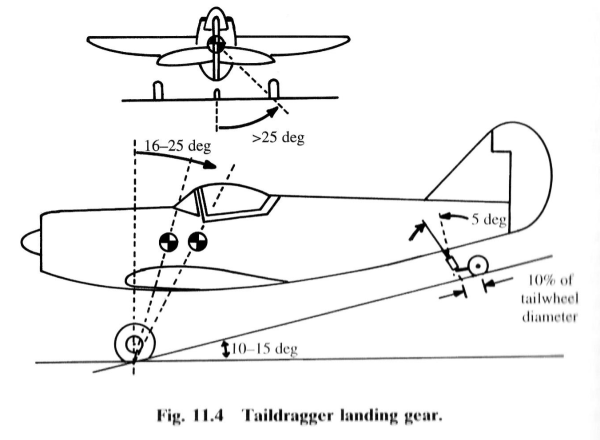-
Posts
31 -
Joined
-
Last visited
-
Days Won
1
Information
-
Aircraft
Sports cub
-
Location
Adelaide south
-
Country
Australia
Recent Profile Visitors
The recent visitors block is disabled and is not being shown to other users.
3rd harmonic's Achievements

Active member (2/3)
-
3rd harmonic started following Aldinga Airshow 2024
-
until
Just got home from the show and it was a bloody good day judging by the number of people who turned up! Great program Parking was abit of a drag, but you get that with so many people. Did anyone else go? -
Yeah, i know they won't share the current evenly, although 2x devices on the same die at the same temp won't be too bad, yes it is really about redundancy. Parallel MOSFET's will because the negative temp Coefficient, BJT's with positive temp won't hence the emitter resistors that give some local current feedback. As generally seen in audio amplifier output stages (and i have repaired MANY!!)... The VISHAY bolt on devices would be a good option, abit of a heat sink would be needed. Shottky diodes don't like high reverse voltages, 60V PIV would be nice maybe.
-
Good point regarding the fuel pumps - yes normal fuel pump powered off the normal bus and the reserve pump powered off the ECU bus behind a diode on the small standby battery. I've used these shottky diodes for a caravan 12V system where i wanted isolation from different charging sources, with both diodes in the package in parallel, for a very low forward voltage drop VISHAY DUAL 150V 80A DIODE PACKAGE In an aircraft i'd be looking at 2x packages, for a total of 4x diodes in parallel. The DA42 accident is really just a lesson in redundancy engineering that could have EASILY been avoided IMO. I'd say they had a partially sulphated, poorly charged battery that collapsed under load when the L/G was retracted, of course a backup ECU battery modification was suggested AFTER the accident. Whoever came up with the electrical system design obviously didn't have much imagination... Unfortunately battery voltage post start and alternator current output check ironically will look artificially GOOD with a sulphated battery. As the voltage will come up quickly and the charge current will be low with the inability of the battery to absorb any charge. A load test will quickly show a battery with high internal impedance. I don't think there's been any official findings on the UL power velocity twin accident ref reg: N106VT??
-
Yeah, look as good as points based magnetos for the time when they were the best thing available, life has moved on in the last 100 years. Solid state capacitor discharge ignitions are still simple enough, but miles better. Every lawnmower, small engine, motorcycle and of course the Rotax 91x series are a testament to that - even if carby is completely gummed up after years of non use generally you'll still get a spark that doesn't fail. Having said that the 2hp 60yr old Briggs&Stratton points motor on my cement mixer hasn't failed yet even though it lives outside with a bag over it...
-
I have been thinking about my UL engine and I agree, RF guy this is likely the best approach. The greatest danger with ECU's that need power for the engine to run is not the alternator failing as you will have some time to find somewhere to land - but a short to ground. I found that out the hard way with a 1980s BMW E30 323 coupe I used to own. Ill advisedly put a standard size battery in rather than the correct DIN66 battery, which wasn't quite as tall. This worked ok for abit until I went over a decent bump and the + battery post shorted out on the bonnet. The car stopped running instantly and I pulled off the road while fumbling for the bonnet released on the passenger side as the battery was fizzing out acid into the engine bay like crazy. My thought was to have a smaller separate battery that ONLY feeds the ECU and have the isolated from the normal battery with a very heavy duty Schottky diode. Ordinarily the batteries will be charged in parallel, but a short on main bus won't take down the ECU and cause an immediate engine failure.
-
There is an unofficial weather station on top of the Adelaide biplanes building that is live online, as well as weather CAMS: https://www.aldingaaviation.com.au/weather-station/ https://www.aldingaaviation.com.au/webcams/
-
YADG is where I have done most of my flying, in all seasons over some years. Yes, in short it can be bloody windy on some days. But there are 4 runways, so normally you can get into the wind or close to it on one. As mentioned a strong south-easterly can be very rough as it comes over the hills behind and swirls in an eddy down onto the field. 08/26 and 18/36 are pretty short. 36-18 has a broad dip in the middle about where the '20' is on the ERSA map 14-32 Is mostly gravel with not much grass (especially at this time of year) and has trees at the southern end. Some people worry about them, but i actually like slipping in over the top of them. In the cub or champ (tailwheel) it's generally suggested to use the grass right next to the LEFT hand side of 21 threshold or the RIGHT hand side of 03 Watch out for the circuit directions, plenty of pilots visiting get it WRONG - aside from the obvious danger, this creates ALOT of annoyance with the Adelaide Biplanes instructors who will be on the look out for it whilst doing training flights. North is ALL LH. SOUTH RH except 14. To be fair, it is abit confusing just reading about it on paper until you've seen it directly. I've attached a word doc with pictures i created to visualise it that may be helpful Autumn is the best time in Adelaide IMO as the weather and winds are generally more moderate, especially April/May cool mornings, before winter hits - that's in contrast to spring which can be very changeable/showery. Although it's been bloody hot and dry at the moment, some rain would be nice to take the edge off. The Adelaide biplanes (Martin/Gaylene) people and cafe are really friendly... YADG circuits all runways.docx
-
Well done for having the balls to post up something that's wasn't so easy!! I ended up going solo after a very limited 9h (although some flying 20yrs previous when I was in air cadets at Camden helped alot) The solo went OK, but the next session of circuits after 1st solo was a shocker and I didn't fly solo again for another hour. The point is that as your training progresses, hopefully? It's your worst performances that will improve not necessarily your best. THAT is actually way more important in developing your piloting skill - In other words can you make good choices and still get it down acceptably when the conditions aren't going your way? Circuits are bloody hard work in summer when it's +30deg. As someone who is reasonably fit in the sports star with a bubble canopy an hour is about all I could handle and would be drenched in sweat and have to down 2l of Powerade afterwards to recover. Don't let it get you down Paradoxically EXPERIENCE is what you get AFTER you needed it!? There's no short circuiting that learning process...
-

Wedgetail aircraft(formerly morgan aircraft)
3rd harmonic replied to gareth lacey's topic in Aircraft Incidents and Accidents
Ah gee that's really sad, what a loss! 68 is barely past retirement age? Only reading this now having off the forum for a bit!! Had the pleasure of meeting Ray in the process of buying the Morgan that i'm currently rebuilding. He struck me as a kind and friendly gentleman good for a chat, but also good at listening too, happy to humor that thoughts and ideas that had with his experience and wisdom. One of those situations in life where you meet some once and think it would be great to see them again at some point, but alas it will never be..! There was an article in sports pilot on him not that long ago, will try to find a link to it... He showed me around the hanger and there was fair load of stuff. Aircraft in various states, some needing repair others only partially built. A lot of the original moulds that were use to produce the fiberglass parts for the Morgan sierra kits. Dealing with all those items will take some effort and of course won't be the first priority of the family in the circumstances. But if anyone finds out about a clear-out or auction at some point i would be interested in seeing what might be available. -
Yeah I think the APEX engines were a high end side show. The Edge performance ROTAX 91x engines are pretty bloody awesome. He does seem to know what he's doing with the performance enhancements and the engine dyno test station ect. His latest 917sti has managed a conservative 200hp, I would definitely go with one if I had a spare +20,000€
-
Edge performance in Norway have been doing Yamaha APEX 300 (Jet-ski engine) conversions successfully for some years now. The 300hp EPex300 claims to be the most powerful lightest weight aircraft engines and aircraft powered by them really have smashed it in STOL competitions. BUT unfortunately Yamaha only recently discontinued the production of the APEX engines meaning he can't do any more conversions...
-
Thanks guys that really is SUPER helpful! Every aircraft is always going to be abit different, as has been noted, but that info will at least give me abit of a guide to work off in doing some calculation to see if the new main L/G position will fall within an acceptable window. I have been keeping a tally of the weight of steelwork added vs components removed and at this stage i'm in front by about 2kg. Not withstanding the reduction in drag by not having a nose wheel. Yes, there is always a compromise with any design choice and accord to this article (https://www.kitplanes.com/design-process-landing-gear-part-6/) the main L/G position on the C140 was perhaps less than optimal??!
-
Good discussion about CofG in relation to weight and balance, the importance can't be overstated... Having done some research and reading to inform my thinking - For a tail wheel A/C a tangent from the contact point of the main L/G should make an relatively acute angle to the nominal CofG as per this diagram - other diagrams specify slight different range of angles 12-18 degrees ect Unfortunately in all the paper records i have from the original build of my machine i can't see any evidence of the aircraft weight and balance having ever been measured/documented and that really isn't wonderful... As i am led to believe from reading though the RAaus info, measuring the A/C weight and calculating the balance is NOT an optional part of the process of getting a provisional airworthiness certificate granted for a new experimental build. Did you guys KG and GB do that as part of getting your machines inspected before test flying? Do you guys happen to know where the Cof G actually is on your A/C for nominal pilot weight say 80kg + full fuel in the front tank and/or minimum fuel?
-
VERY NICE - how many more kts does the chequered flag rudder give you? Morgan owners can also boast that the all flying elevator avoids the pitch down moment in trans sonic flight approaching the sound barrier.








until